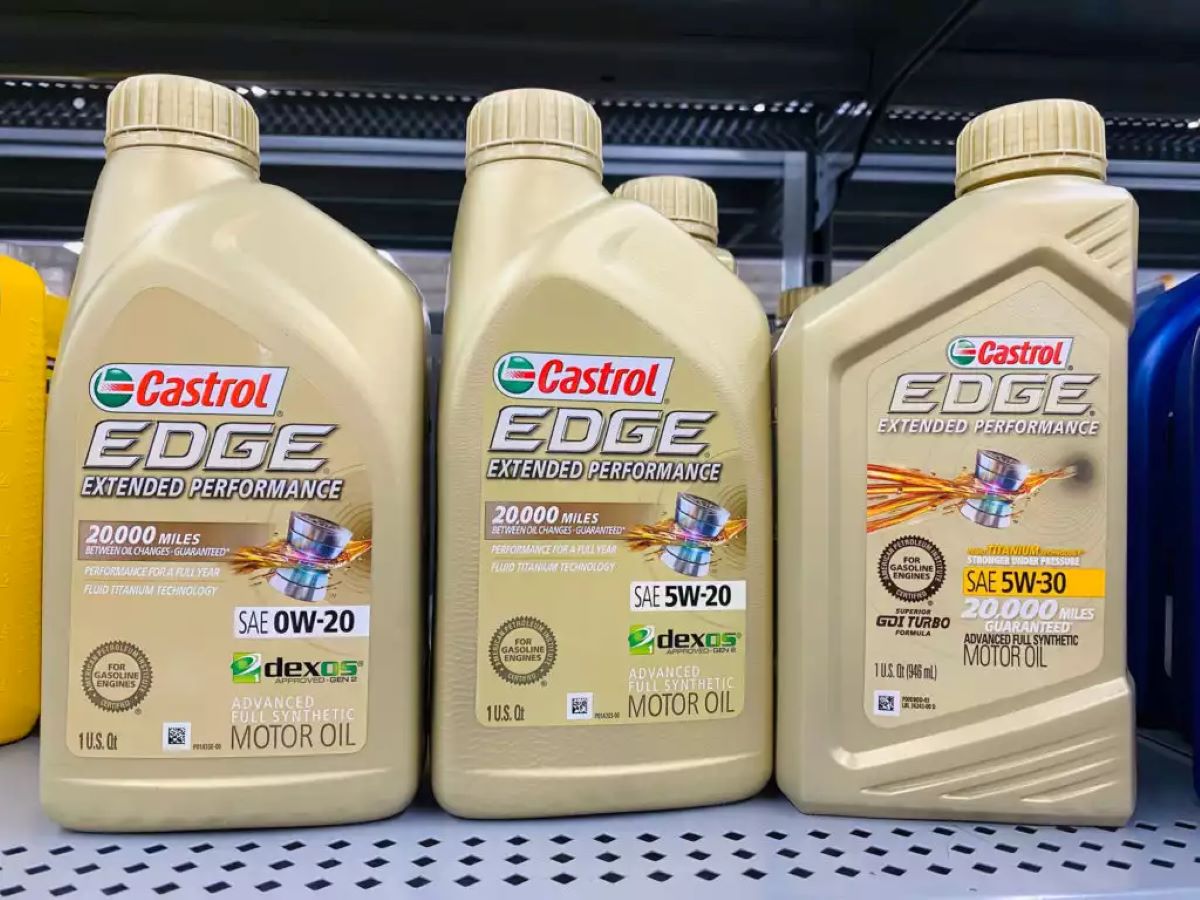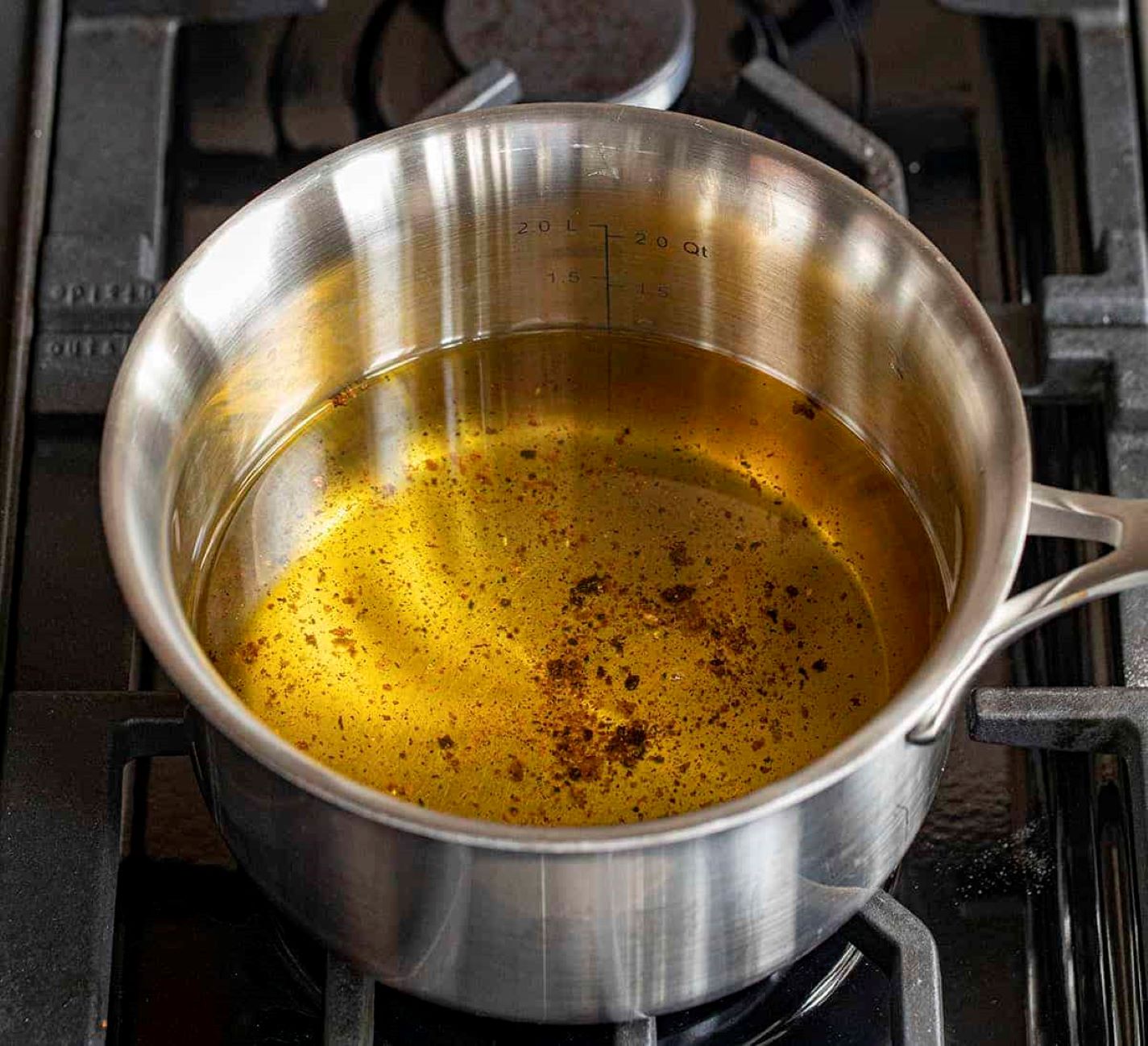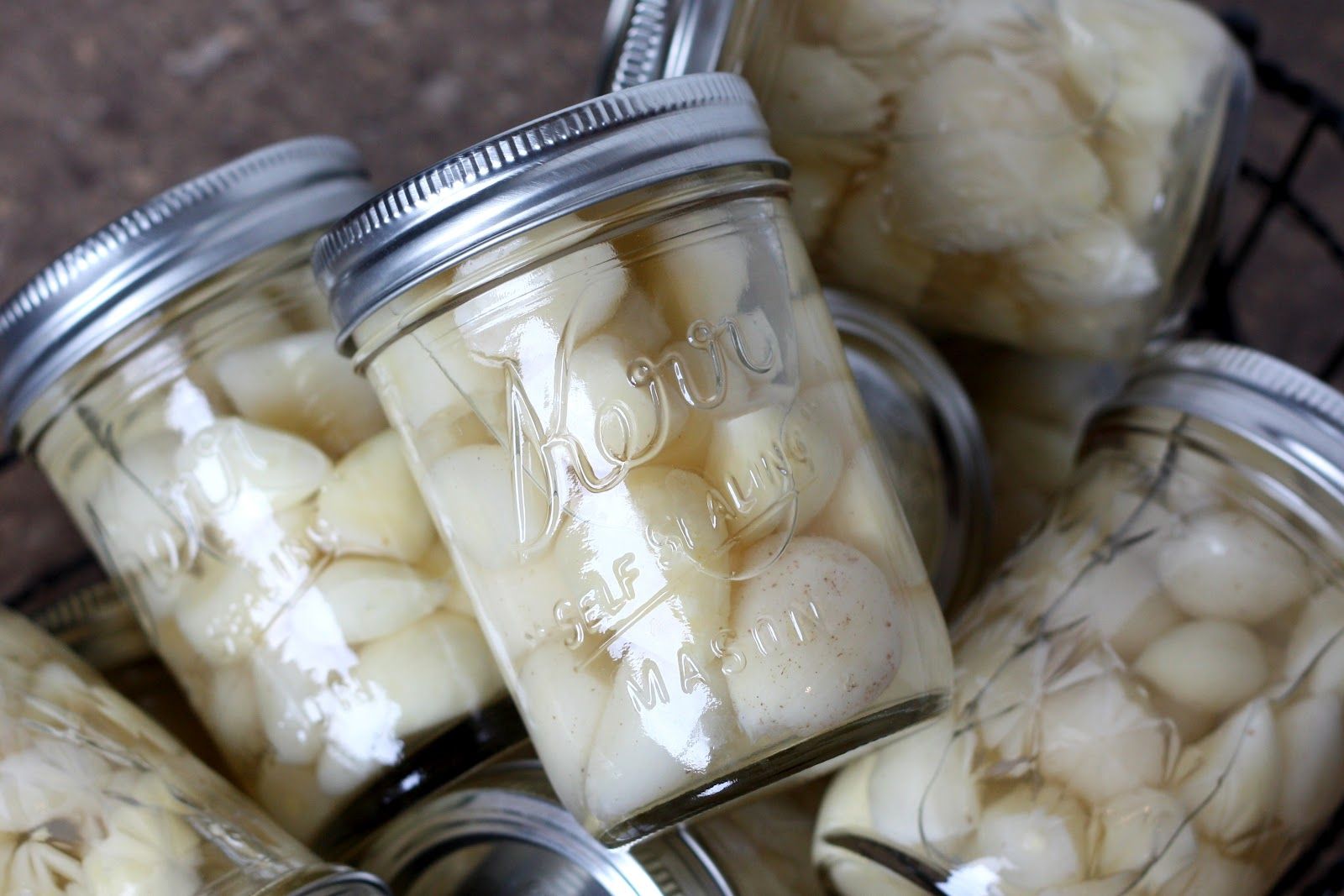

Articles
How To Store Canola Oil
Modified: October 28, 2024
Learn the best practices for storing canola oil in this informative article. Discover tips to keep your canola oil fresh and maximize its shelf life.
(Many of the links in this article redirect to a specific reviewed product. Your purchase of these products through affiliate links helps to generate commission for Storables.com, at no extra cost. Learn more)
Introduction
Canola oil is a popular cooking oil that is known for its versatility, mild flavor, and various health benefits. Whether you use it for sautéing, frying, baking, or salad dressings, proper storage is essential to ensure the longevity and quality of your canola oil.
Storing canola oil properly not only helps to preserve its freshness and flavor but also prevents it from degrading and going rancid. In this article, we will discuss the benefits of storing canola oil correctly, factors to consider before storing, recommended storage containers, and various methods of storing canola oil in the pantry, refrigerator, and freezer. We will also provide some tips to help you maintain the quality of your canola oil.
By following these guidelines, you can ensure that your canola oil stays fresh, flavorful, and free from any potential risks.
Key Takeaways:
- Properly storing canola oil maintains its flavor, nutritional value, and safety. Consider factors like temperature, light exposure, and container choice to ensure freshness and longevity.
- Storing canola oil in the pantry, refrigerator, or freezer offers flexibility and extends its shelf life. Follow proper thawing methods for frozen oil to maintain quality.
Read more: What Is A Canola Seed
Benefits of Storing Canola Oil Properly
Properly storing canola oil offers numerous benefits, ranging from maintaining its quality and flavor to ensuring its long-term usability. Here are some key benefits of storing canola oil correctly:
- Prolongs Shelf Life: Canola oil has a relatively long shelf life, but it can still degrade over time if not stored properly. By storing it in optimal conditions, such as in airtight containers and away from heat and light, you can extend its shelf life and reduce the risk of it going rancid.
- Maintains Flavor and Nutritional Value: Canola oil is appreciated for its light, neutral flavor and its rich nutritional composition. Proper storage helps to preserve these qualities by protecting it from oxidation, which can lead to flavor degradation and nutrient loss.
- Prevents Rancidity: Canola oil is susceptible to rancidity, which occurs when the oil oxidizes and becomes stale, resulting in an unpleasant taste and odor. Storing canola oil in a cool, dark place helps to slow down oxidation, minimizing the risk of rancidity.
- Cost Savings: By properly storing your canola oil, you reduce the likelihood of it going bad before you can use it. This means you won’t need to replace it as frequently, resulting in cost savings over time.
- Promotes Food Safety: Storing canola oil properly is crucial for maintaining food safety. Poor storage conditions, such as exposure to heat and light or improper containers, can promote the growth of bacteria, mold, and other harmful microorganisms. By storing canola oil correctly, you reduce the risk of contamination and ensure the safety of your food.
By understanding the benefits of storing canola oil properly, you can take proactive steps to preserve its quality, flavor, and nutritional value, ensuring an enjoyable culinary experience and minimizing waste.
Factors to Consider Before Storing Canola Oil
Before you store your canola oil, it’s important to consider certain factors that can greatly impact its shelf life, quality, and overall safety. Here are some key factors to consider:
- Storage Temperature: Canola oil should be stored at a cool temperature to slow down oxidation and rancidity. Ideally, the temperature should be between 50°F to 70°F (10°C to 21°C). Avoid storing it near a heat source or in direct sunlight, as exposure to high temperatures can accelerate oil degradation.
- Light Exposure: Canola oil is sensitive to light. UV rays from sunlight can cause oxidation and negatively impact its flavor and quality. Therefore, it’s important to store canola oil in a dark or opaque bottle to protect it from light exposure.
- Airtight Containers: Canola oil should be stored in airtight containers to prevent air and moisture from coming into contact with the oil. Oxygen and moisture can promote oxidation, leading to rancidity. Glass or food-grade plastic containers with tight-fitting lids are suitable for storing canola oil.
- Container Size: Consider the size of the container in relation to the amount of canola oil you have. It’s best to choose a container that allows minimal headspace, as excess air in the container can accelerate oxidation. If you have a large container with only a small amount of oil left, consider transferring it to a smaller bottle to minimize air exposure.
- Original Packaging: If you prefer to keep your canola oil in its original packaging, ensure that it is tightly sealed. If the container has been compromised or the oil has reached its expiration date, it is advisable to transfer the oil to a new airtight container to maintain its quality and freshness.
- Storage Location: The storage location plays a vital role in maintaining the quality of canola oil. It is best to store it in a cool, dark, and well-ventilated pantry or cupboard. Avoid areas with high humidity, such as near the stove or dishwasher, as moisture can facilitate oil deterioration.
- Usage Frequency: Consider how frequently you use canola oil. If you use it regularly and go through it quickly, you may opt to store it at room temperature in the pantry. However, if you use it infrequently, storing it in the refrigerator or freezer can help prolong its shelf life.
By taking these factors into account, you can make informed decisions about how to properly store your canola oil and ensure its long-lasting freshness and quality.
Recommended Storage Containers for Canola Oil
Choosing the right storage container for canola oil is essential to maintain its freshness, prevent contamination, and protect it from exposure to air, light, and moisture. Here are some recommended storage containers for canola oil:
- Glass Bottles: Glass bottles are an excellent choice for storing canola oil. They are non-reactive, which means they won’t interact with the oil and alter its flavor or quality. Glass also provides a dark and opaque environment, protecting the oil from light exposure. Look for bottles with a tight-fitting screw-on cap or a cork stopper.
- Food-Grade Plastic Containers: If you prefer a lightweight and non-breakable option, food-grade plastic containers are a good alternative. Look for containers made from high-density polyethylene (HDPE) or polypropylene (PP), as these materials are known for their resistance to oil and are less likely to leach harmful substances into the oil. Make sure the container has a secure, airtight lid.
- Metal Cans: While less common, metal cans can also be used to store canola oil. Ensure that the cans are made from food-grade tin or aluminum and are lined with a protective coating to prevent any reactions between the oil and the metal. Look for cans with a tight-sealing lid to keep air and moisture out.
- Dark-Colored Plastic Bottles: If using plastic bottles, opt for dark-colored ones, such as amber or green, to protect the oil from light exposure. Light-colored plastic containers are more translucent and allow more light to penetrate, which can lead to oxidation and flavor degradation over time.
Regardless of the container you choose, make sure it is clean and free from any impurities before transferring the canola oil. Also, ensure that the container has a tight-fitting lid or closure mechanism to prevent air, moisture, and contaminants from entering.
Remember to label the container with the purchase date or expiration date of the canola oil. This will help you keep track of its freshness and determine when it’s time to replace it.
By using the recommended storage containers, you can protect the quality and integrity of your canola oil, ensuring it remains fresh and ready for use in your culinary adventures.
Storing Canola Oil in the Pantry
The pantry is a convenient and common location for storing canola oil, especially if you use it frequently. Here are some tips for storing canola oil in the pantry:
- Choose a Cool and Dark Spot: Select a spot in your pantry that is away from direct sunlight and any sources of heat, such as the stove or oven. Canola oil should be stored at a moderate temperature, ideally between 50°F to 70°F (10°C to 21°C), to prevent it from degrading quickly.
- Use Airtight Containers: Transfer your canola oil from its original packaging into clean and airtight containers, such as glass bottles or food-grade plastic containers, to minimize exposure to air and maintain its freshness. Ensure that the lids are tightly sealed to prevent any air or moisture from entering.
- Avoid Moisture and Odor Sources: Keep your canola oil away from areas with high humidity, as moisture can accelerate oil degradation. Additionally, avoid storing it near strong-smelling items like spices or cleaning products, as canola oil can absorb odors easily.
- Organize Properly: Arrange your pantry in a way that allows easy access to your canola oil while keeping it separated from other food items. Placing it on a stable shelf or in a dedicated storage area can help prevent accidental spills or knocking over containers.
- Rotate Stock: To ensure freshness, practice a first-in, first-out system. Use older bottles of canola oil first, and place newly purchased ones behind them. This helps you use up the oil before it reaches its expiry date.
Remember to check the quality of your canola oil regularly. Look for any signs of spoilage, such as a rancid smell, a cloudy appearance, or off-flavors. If you notice any of these signs, it’s best to discard the oil and replace it with a fresh bottle.
By following these pantry storage tips, you can keep your canola oil easily accessible and ensure its longevity, flavor, and overall quality.
Store canola oil in a cool, dark place away from direct sunlight and heat sources. Keep it tightly sealed to prevent oxidation and spoilage. Avoid storing it near strong-smelling foods as it can absorb odors.
Read more: How To Store Oil
Storing Canola Oil in the Refrigerator
If you don’t use canola oil frequently or prefer to extend its shelf life, storing it in the refrigerator can be a viable option. Here are some tips for storing canola oil in the refrigerator:
- Choose a Suitable Container: Transfer your canola oil to a clean, airtight container before placing it in the refrigerator. Glass bottles or food-grade plastic containers with tightly sealed lids work well for this purpose. Make sure the container is sized appropriately to minimize air exposure.
- Designate a Specific Shelf: Assign a specific shelf or area in the refrigerator dedicated to storing canola oil. This helps to prevent cross-contamination with other food items and ensures easy access when needed.
- Keep Away from Strong Odors: Canola oil can absorb strong odors from neighboring foods in the refrigerator. To prevent this, store the oil away from items with potent aromas, such as onions, garlic, or pungent cheeses.
- Protect from Light Exposure: While the refrigerator provides a cool environment, it may expose the canola oil to light when you open the door. To minimize light exposure, store the oil in a dark-colored container or cover it with aluminum foil or an opaque material.
- Monitor Temperature Fluctuations: It’s important to maintain a consistently cold temperature for storing canola oil in the refrigerator. Check that the temperature settings are appropriate and avoid placing the oil near the door or vents, where temperature fluctuations are more frequent.
- Avoid Freezer Zone: While the refrigerator provides a suitable storage environment, make sure the canola oil is not stored in the freezer zone. Canola oil may solidify and become cloudy when exposed to very low temperatures, affecting its texture and quality.
Keep in mind that refrigeration may cause canola oil to thicken or solidify. Before using refrigerated canola oil, allow it to sit at room temperature for a few minutes or gently warm it in your hands or a warm water bath to return it to its liquid state.
By storing canola oil in the refrigerator with these guidelines in mind, you can prolong its shelf life and maintain its freshness for a longer period.
Storing Canola Oil in the Freezer
If you want to further extend the shelf life of canola oil, storing it in the freezer is an excellent option. Freezing canola oil can help preserve its freshness and prevent rancidity for an extended period. Here’s how to store canola oil in the freezer:
- Choose Suitable Containers: Transfer the canola oil to a freezer-safe container, such as a glass bottle or food-grade plastic container. Ensure the container is airtight and has a secure lid to prevent air and moisture from entering.
- Leave Adequate Head Space: When filling the container, leave some headspace to accommodate the slight expansion that may occur as the oil freezes. Aim for about 1/2 inch of space at the top of the container.
- Date and Label the Containers: Label each container with the date of freezing to help keep track of its storage time. Canola oil can typically be stored in the freezer for up to six months without significant degradation in quality.
- Store in a Stable Position: Place the containers of canola oil in the freezer in an upright position to prevent leakage or spillage. Choose a location where the oil is less likely to be jostled or bumped, which could potentially cause the container to crack.
- Thawing and Usage: When you need to use frozen canola oil, transfer it to the refrigerator and allow it to thaw slowly overnight. Avoid thawing it at room temperature or using microwaves or hot water baths, as rapid temperature changes can negatively impact the oil’s quality. Once thawed, use the oil within a reasonable timeframe.
Freezing canola oil can cause it to become cloudy or develop sediment at low temperatures. However, this is normal and does not affect the quality or usability of the oil. Before using frozen canola oil, give it a gentle stir or shake to ensure any solids are evenly distributed.
Keep in mind that freezing canola oil repeatedly can degrade its quality over time. Therefore, it’s recommended to freeze canola oil for only one cycle (up to six months) for the best results.
By freezing canola oil using these guidelines, you can maximize its storage life and ensure you have a fresh supply of canola oil on hand whenever you need it.
Tips for Properly Storing Canola Oil
To ensure that your canola oil stays fresh, flavorful, and safe for consumption, here are some essential tips for properly storing it:
- Keep it away from Heat and Light: Canola oil should be stored in a cool and dark place, away from direct sunlight and heat sources. Exposure to light and high temperatures can accelerate oxidation and lead to rancidity. Consider storing it in a pantry or cupboard, and avoid placing it near the stove or other sources of heat.
- Use Appropriate Storage Containers: Choose storage containers that are airtight and made of materials that won’t react with the oil. Glass bottles, food-grade plastic containers, or metal cans with tight-fitting lids are recommended. Ensure that the containers are clean and free from any residue or impurities before transferring the canola oil.
- Protect it from Air and Moisture: Air and moisture can hasten the oxidation process, leading to off-flavors and rancidity. Ensure that the containers are tightly sealed to prevent air and moisture from entering. Use containers with minimal headspace to minimize the amount of air inside. Additionally, avoid storing canola oil near areas with high humidity.
- Consider Size and Usage: Choose storage containers that are appropriately sized for the amount of canola oil you use. If you have a large container with only a small amount of oil, consider transferring it to a smaller container to minimize air exposure. If you use canola oil infrequently, consider storing smaller portions to reduce the risk of oil going bad before you can use it.
- Rotate Stock: When purchasing new canola oil, use the oldest bottles first. By practicing a first-in, first-out method, you can ensure that the oldest oil is used before it reaches its expiration date. This helps prevent wastage and ensures that you always have fresh canola oil on hand.
- Monitor Storage Conditions: Regularly check the storage area for any signs of temperature fluctuations, exposure to light, or increased humidity. If you notice any changes, such as increased warmth or light exposure, consider relocating the canola oil to a more suitable storage spot.
- Check for Spoilage: Periodically inspect your canola oil for any signs of spoilage, such as a rancid smell, changes in color or appearance, or off-flavors. If you detect any of these signs, it’s best to discard the oil and replace it with a fresh bottle.
By following these tips, you can maintain the quality, flavor, and safety of your canola oil, ensuring optimal results in your culinary endeavors.
Potential Risks and Shelf Life of Canola Oil
While canola oil is known for its health benefits and versatility in cooking, it is important to be aware of potential risks and understand its shelf life to ensure safe and optimal usage. Here’s what you need to know:
Potential Risks:
Canola oil is generally safe for consumption, but there are a few risks to consider:
- Allergic Reactions: Some individuals may have allergies or sensitivities to canola oil. If you experience any adverse reactions such as itching, swelling, or difficulty breathing after consuming canola oil, seek medical attention.
- Rancidity: Canola oil can become rancid over time, especially if not stored properly. Rancidity is characterized by off-putting odors, flavors, and a change in color or appearance. Consuming rancid oil may lead to digestive discomfort and an unpleasant taste. It is advised to discard any canola oil that has gone rancid.
Shelf Life:
The shelf life of canola oil depends on various factors, including storage conditions and the quality of the oil. Generally, canola oil has a shelf life of about one to two years from the production date when stored unopened in a cool and dark place.
Once opened, canola oil should ideally be consumed within six to twelve months to ensure optimal flavor and quality. However, this timeframe can vary depending on storage conditions and the presence of factors like air, light, and heat exposure.
It is important to regularly check the smell, appearance, and taste of canola oil to ensure it hasn’t gone rancid. If there are any signs of rancidity, such as a foul odor or a strange taste, it is best to discard the oil and replace it with a fresh bottle.
To extend the shelf life of canola oil, follow these storage recommendations:
- Store canola oil in a cool and dark place, away from direct sunlight and heat.
- Use airtight containers to minimize air and moisture exposure.
- Avoid storing canola oil near strong odors or areas with high humidity.
- Rotate stock by using older bottles first and keeping track of expiration dates.
- Regularly check storage conditions and monitor for any signs of spoilage.
By understanding potential risks and the shelf life of canola oil, you can make informed decisions about its usage and storage, ensuring a safe and enjoyable culinary experience.
Read more: How To Store Truffle Oil
Conclusion
Properly storing canola oil is essential for maintaining its quality, flavor, and nutritional benefits. By following the recommendations outlined in this article, you can ensure that your canola oil remains fresh, safe to consume, and enjoyable to use in your cooking endeavors.
Benefits of storing canola oil properly include prolonging its shelf life, maintaining its flavor and nutritional value, preventing rancidity, saving costs, and promoting food safety. Factors to consider before storing canola oil include storage temperature, light exposure, using airtight containers, container size, original packaging, storage location, and usage frequency.
Recommended storage containers for canola oil include glass bottles, food-grade plastic containers, and metal cans. Each container should be airtight to protect the oil from air and moisture, and if using plastic containers, it’s advisable to choose dark-colored ones to minimize light exposure.
Storing canola oil in the pantry provides convenient access for regular use, while storing it in the refrigerator can extend its shelf life. Freezing canola oil is an excellent option to further prolong its freshness, but proper thawing is necessary before using it.
Additional tips for storing canola oil include keeping it away from heat and light, using appropriate storage containers, protecting it from air and moisture, considering container size and usage frequency, rotating stock, monitoring storage conditions, and checking for spoilage.
It is important to be aware of potential risks associated with canola oil, such as allergies and rancidity. Understanding the shelf life of canola oil and regularly inspecting its quality can help ensure safe consumption.
By implementing these guidelines and recommendations, you can maximize the longevity and quality of your canola oil, allowing you to enjoy its benefits in your culinary creations for an extended period.
Frequently Asked Questions about How To Store Canola Oil
Was this page helpful?
At Storables.com, we guarantee accurate and reliable information. Our content, validated by Expert Board Contributors, is crafted following stringent Editorial Policies. We're committed to providing you with well-researched, expert-backed insights for all your informational needs.














0 thoughts on “How To Store Canola Oil”